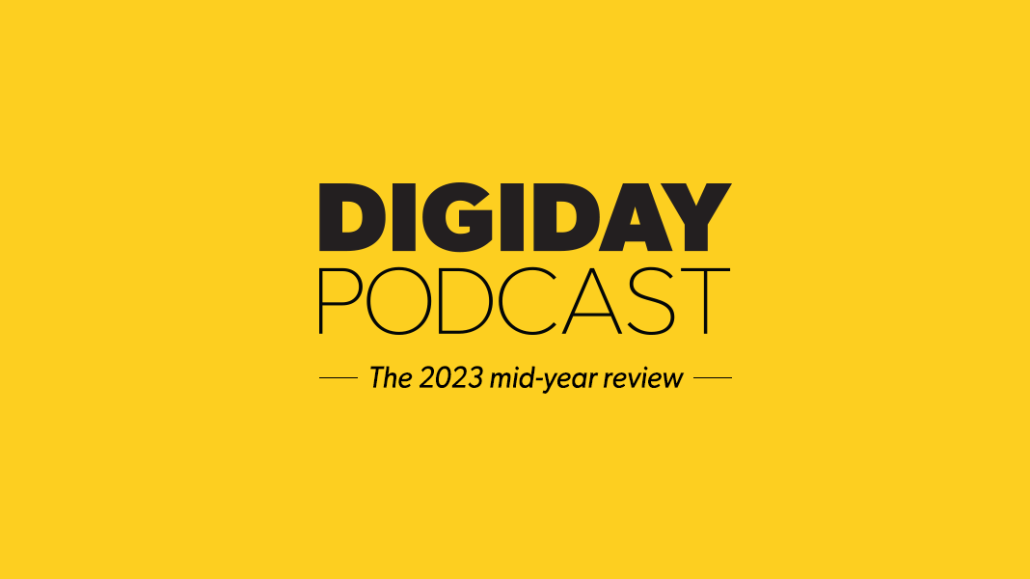What’s going on with the media and advertising industries at 2023’s midway point

Subscribe: Apple Podcasts • Spotify
If you’re feeling a little punch-drunk by all the economic downturn talk through the first six months of 2023 (and really, through the last six-plus months of 2022), you’re not alone. Digiday editors and Digiday Podcast co-hosts Kayleigh Barber and Tim Peterson are feeling it too.
At the year’s midway mark, the pair compare notes on the state of the media and advertising industries. The discussion ranges from the decline in ad spending to the rise of generative AI, with the duo delving into how the ad sales cycle has changed and to what extent those changes are temporary or permanent.
Below are highlights from the conversation, which have been lightly edited for clarity.
The foggy financial forecast
Barber: Going into 2023, a big question that we were asking all of our sources was, ‘How long do you think this economic slowdown, this period of turmoil is going to last? When will the crystal ball clear up?’ And a lot of people were saying [it would happen] by this point [in the year]. They were hoping that the back half of the year would look pretty clear or that there would be this inflection point. And we’re here, and I don’t know if that’s necessarily the case.
The pressure on ad pricing
Peterson: With advertising, it’s like, are advertisers cutting budgets because they need to cut budgets because they need that money so they don’t have to lay off their employees? Or are they cutting budgets because they see an opportunity to pressure media companies — whether it’s TV networks, streaming services, publishers — to lower their prices? It doesn’t have to be mutually exclusive. Both can be true. With the upfront cycle that we’re in the middle of, it seems like that’s very much at play.
Publishers’ embrace of AI
Barber: For media companies who are struggling, those shiny new toys [like artificial intelligence] are really good at getting investors excited and shareholders excited. And it does, I think, eliminate a lot of operational overhead if used effectively. Or it replaces a lot of operational overhead if you get rid of journalists’ roles who were once [producing content]. I think it can help with some cost-cutting, but there is a lot of investment that goes into it upfront.
AI’s role in ad sales
Peterson: There definitely seems like there could be a revenue opportunity for publishers [to sell advertisers on their AI-related ad products]. But then there’s the other side of it [from the advertisers’ perspective] of does that create an opportunity for them to pressure publishers to lower costs? Because[the advertiser could say], ‘If you’re throwing AI at the thing, then that means you, publisher, are saving money because you don’t have as many human employees working on this.’ I could see that being something that advertisers press on as a way to potentially save money or to ensure that the money they’re spending is being used efficiently, that that money is necessary.
More in Media

What publishers are wishing for this holiday season: End AI scraping and determine AI-powered audience value
Publishers want a fair, structured, regulated AI environment and they also want to define what the next decade of audience metrics looks like.

Media giant Essence launches a marketplace for Black women-led brands
Essence has launched WeLoveUs.shop, a new online marketplace dedicated to Black women-led brands.

In Graphic Detail: The state of AI referral traffic in 2025
The stats reveal a new audience pipeline forming outside of traditional search and social platforms.








